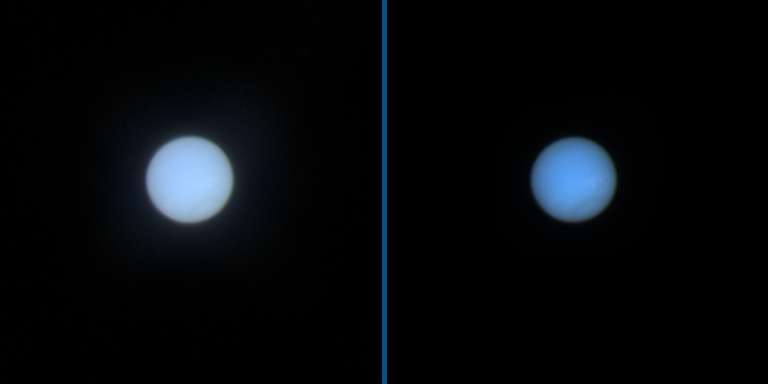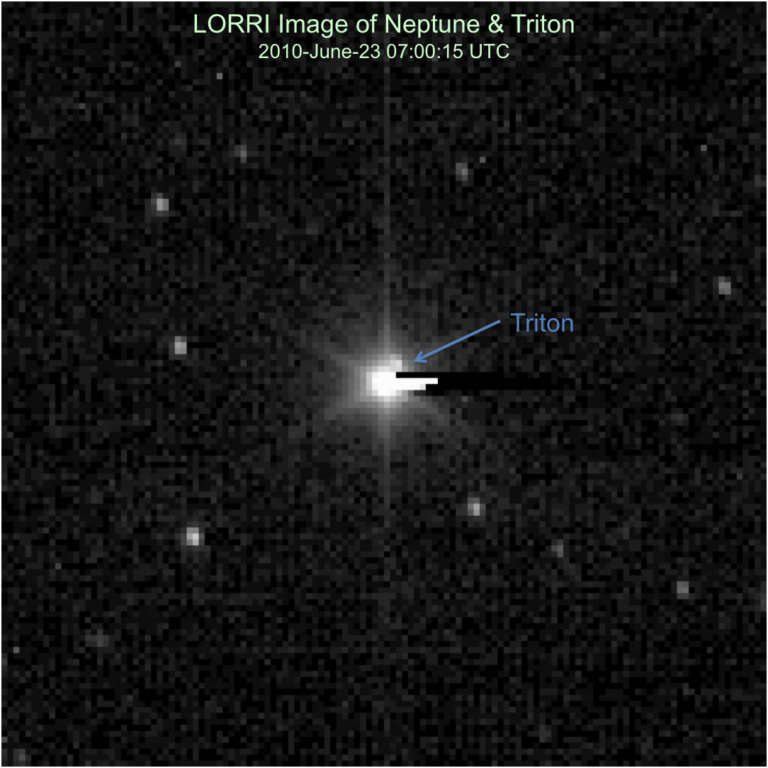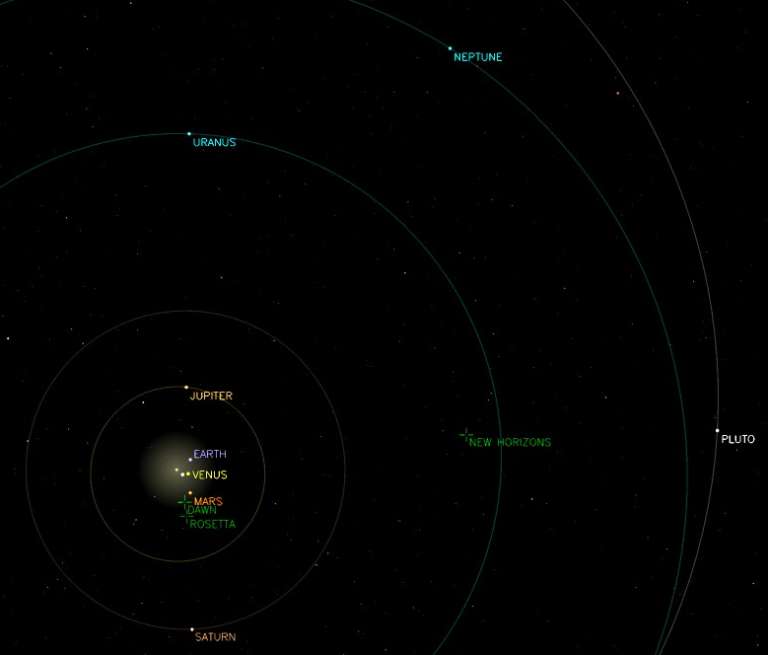Emily Lakdawalla • Sep 06, 2010
Neptune from two slightly different perspectives
Coincidentally, two new images of Neptune were posted today, from two very different sources. One came from Earth. It was from the Hubble Space Telescope, our most impressive eye on objects in the sky, in visible and ultraviolet wavelengths anyway. Although Hubble has great eyesight, Neptune is very far away from Earth -- never closer than 29 astronomical units -- so it's a relatively small ball in Hubble photos. Still, the photo is detailed enough to reveal some cloud features.

On the same day, the New Horizons team posted a new view that they took of Neptune last month. This is a less detailed photo, of course, because as fine a camera as New Horizons' LORRI is, it's not Hubble. Still, some of you might be surprised that although New Horizons has traveled nearly to the orbit of Uranus, it can't capture photos of Neptune that are more detailed than this. What gives?

As far as New Horizons is from Earth (more than 17 astronomical units, approaching Uranus' orbit at 19 AU from the Sun, 18 from Earth), it was actually even farther from Neptune when it captured this photo: a huge 23 AU. If you're having trouble figuring out how that works, here's a diagram that should make things clear:

Even at the enormous distance of 23 AU, New Horizons was able to separate the light of Neptune's largest moon Triton from the light of the planet, which was 100 times brighter. That's pretty impressive. But it's not just an impressive trick; there's important science going on, too. As you can see from Earth's position in the diagram, we pretty much always see Neptune fully lit by the Sun. Our other most distant camera-equipped spacecraft are Cassini, in orbit at Saturn, and Dawn and Rosetta, in the asteroid belt. Even if they were turned to image Neptune, they'd still see a world almost fully lit by the Sun. New Horizons isn't much closer to Neptune than Earth or any of the deep spacecraft, but it sees Neptune at a much higher phase angle (the angle from Sun, to Neptune, to spacecraft) of 34 degrees, and that number will increase with time as New Horizons slowly gains on Pluto. Neptune's clouds reflect light differently depending on the phase angle at which they're observed; the precise nature of those variations with phase haven't yet been mapped out, and as New Horizons does so we'll learn about the structure of Neptune's atmosphere. No other spacecraft can do this, and there's absolutely no other spacecraft currently being planned that will be able to in the foreseeable future. So New Horizons is already performing unique science, even though it's only about halfway to Pluto.
Support our core enterprises
Your support powers our mission to explore worlds, find life, and defend Earth. You make all the difference when you make a gift. Give today!
Donate

 Explore Worlds
Explore Worlds Find Life
Find Life Defend Earth
Defend Earth

